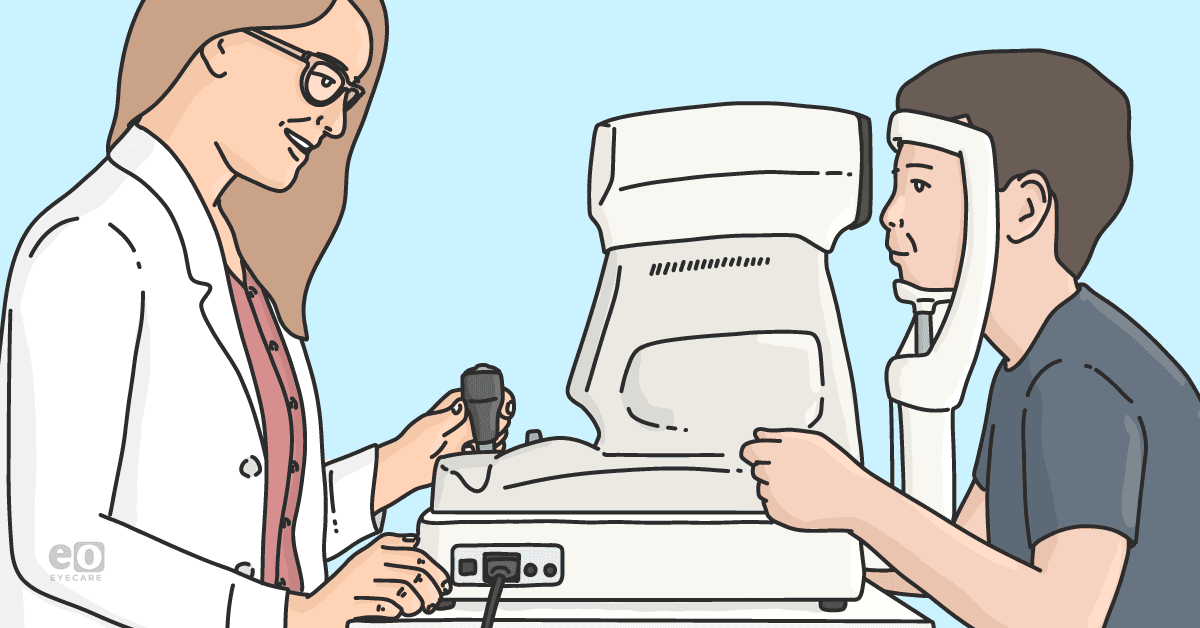Myopia management is increasingly recognized as the standard of care for children with myopia. Many eyecare professionals are now incorporating myopia management into their daily practice, whether that involves low-dose atropine, multifocal or dual-focus soft contact lenses, orthokeratology, or myopia management spectacles in some countries.
Once a patient is enrolled in a myopia management program, they are closely monitored every several months. The challenge then faced by the eyecare professional is to determine if their chosen treatment is effective.
Like visual fields and optical coherence tomography in monitoring glaucoma, many diagnostic tools are available to the eyecare provider to help identify and monitor myopic progression.
1. Cycloplegic refraction
Establishing a baseline
Establishing an appropriate baseline is crucial for myopia management. The most accurate baseline is performed through cycloplegic refraction. This is especially important when treating children because they have a robust accommodative system, which can often overestimate the amount of baseline myopia.
In addition, identifying pre-myopia through cycloplegic refraction is the single best predictor of future myopia.1 Thus, performing refraction, autorefraction, or retinoscopy with cycloplegia is vital in establishing an appropriate baseline before initiating treatment.
Monitoring for myopia progression
Careful, periodic monitoring is crucial in myopia management. Depending on the case, this may vary from every 3 months to 6 months. At the annual exam, a repeat cycloplegic refraction should be performed to determine any true refractive myopic progression.
Without myopia management, a 7-year-old child with myopia is expected to progress about 1 diopter a year on average, and a 12-year-old about half a diopter a year on average.2 The rate can vary based on both age and ethnicity. The rate can vary based on both age and ethnicity, where the female sex often exhibits a faster myopic progression rate,3,4 along with Asian children compared to white, European children.3,4,5
With effective myopia control, success occurs when the rate is below the average, at approximately 50%.
2. Axial length
Establishing a baseline
Axial length (AL) is the measurement of the patient’s eye from the anterior cornea to the retinal pigment epithelium. The value is obtained through ultrasound or biometry and is more accurate and repeatable than refraction.
AL growth beyond normal limits will eventually result in myopia. Furthermore, a child with myopia will continue to grow at an expedited rate compared to their hyperopic and emmetropic peers. Baseline axial length is particularly useful before initiating myopia management therapy.
The value can be plotted on a growth chart and compared to a normative database based with regard to ethnicity and sex. The eyecare provider can then determine the baseline percentile in which the child falls.
This value is critical in parent education, as well as determining the aggressiveness of the intervention. A child with myopia who falls within the 90th percentile will be managed more aggressively than a child who falls within the 50th percentile.
Monitoring for myopia progression
Axial length should be repeated at each progression check, at least every 6 months. Patients with myopia under the age of 10 who are not recipients of myopia management are expected to progress up to 0.3mm per year, while those same patients ≥10 years have a progression rate up to 0.2mm per year.6,7,8
Growth at approximately 50% of these averages, closer to that of an emmetropic child, is considered a successful myopia control outcome. This metric is valuable for determining whether the chosen intervention is effective.
It helps the provider to determine if a change in intervention or initiation of dual therapy is necessary. It also supports the conversation of improved treatment compliance, visual hygiene, and increased outdoor play.
3. Keratometry or topography
Keratometry and/or topography should be performed at the myopia consultation to determine from which source the majority of the myopic power is attributable—axial versus corneal. This is also a great screening tool for keratoconus, a corneal degeneration that results in secondary myopia.
If there is significant myopic progression, and the axial length progression does not correlate, re-evaluation of corneal curvature is warranted, and keratoconus should be ruled out. Secondary myopia, like keratoconus, should be ruled out for any child under the age of 10 with 6.0 diopters or more of myopia.
4. Orthokeratology over-refraction
Patients who are wearing orthokeratology (ortho-k) can be difficult to monitor for progression due to the intentional over-correction inherent in the design of the lenses (i.e., the compression factor or Jessen factor). This design can “mask” mild refractive progression throughout the year. Axial length monitoring is ideal for patients in the ortho-k modality.
However, without axial length monitoring, over-refraction of the lenses can be particularly useful in monitoring progression. Rather than annually washing the patient out by short-term discontinuation of the ortho-k lenses, monitoring over-refraction can be insightful in these cases.
For example, if a patient had an over-refraction of +0.75D at the 1-month ortho-k finalization and at the 1-year evaluation the over-refraction is -0.25D, the patient has likely progressed.
Utilizing over-refraction in ortho-k, while not perfect, is more consistent than monitoring refraction, which can vary throughout the day.
Conclusion
There is no single, correct way of identifying and monitoring myopia progression; rather, it is important to use a combination of all the diagnostic tools available. These tools can be as simple as a retinoscope, or as complex as a biometer.
The earlier the diagnosis and intervention, and the more frequent and deliberate the monitoring of treatment success, the more lives the eyecare provider can impact.
